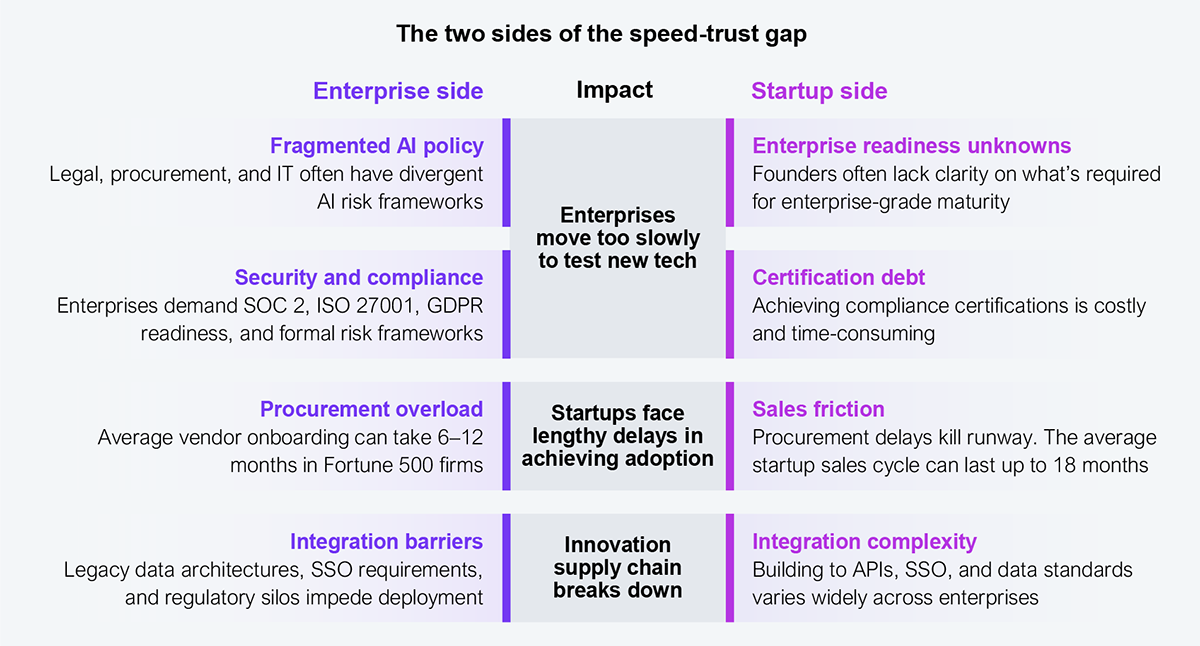WRITER’s San Francisco AI Leaders forum offered a clear view of enterprise AI reality: a speed–trust gap now stands in the way of maximizing the business benefits of rapid technological innovation. Enterprise business and IT leaders must resolve this tension between the speed of startup innovation and the “trust” demands of stringent enterprise-grade standards—or cede to those who do.
Enterprises are built to trust slowly. Procurement, compliance, and IT frameworks ensure control, but at the cost of the pace of experimentation. They must adapt to the pace of Silicon Valley startups such as WRITER, so that they too can benefit from the new features, new agents, and new integrations delivered every few weeks.
The speed–trust gap threatens the innovation supply chain between startups and enterprises. CEO May Habib highlighted this at the HFS Research Fall Summit in NYC last month, saying she had to reinvent her company every four months. A WRITER executive at the forum admitted, “Our customers are six to eight months behind where we could take them.”
That’s the speed–trust gap in action: the months-long delay between innovation and businesses feeling the benefit. As innovation accelerates, firms must keep pace by applying those innovations to lead in their markets.
WRITER’s stack comprising proprietary LLMs, a rapidly developing, enterprise context-feeding, secure data layer, and reliable agentic automation is a result of the firm’s steady focus on building for the enterprise. But much of the market is still catching up. Even WRITER’s most forward-thinking customers are not yet able to keep pace with the full range of innovations headed their way.
The acceleration of AI has shattered the traditional innovation cycle. Today’s successful and fast-scaling startups become enterprise-ready only months after they’re born. With rapid growth comes early demands to meet enterprise governance and compliance requirements. Enterprises must respond by modernizing their risk and procurement frameworks to avoid creating bottlenecks. If both sides fail to adjust (see Exhibit 1), the innovation supply chain breaks down.

Source: HFS Research, 2025
To close the gap, speed and trust must become complementary.
Closing the speed-trust gap requires equipping your procurement team to sign off in weeks, not quarters.
The year ahead will not reward those who play it safe, but those who build trust at the pace of innovation. You need startup-level speed; they need your trust. To absorb innovation at the pace required, take a fresh and AI-led approach to managing risk and achieving compliance for the technologies reshaping your market today and tomorrow.
Register now for immediate access of HFS' research, data and forward looking trends.
Get StartedIf you don't have an account, Register here |
Register now for immediate access of HFS' research, data and forward looking trends.
Get Started